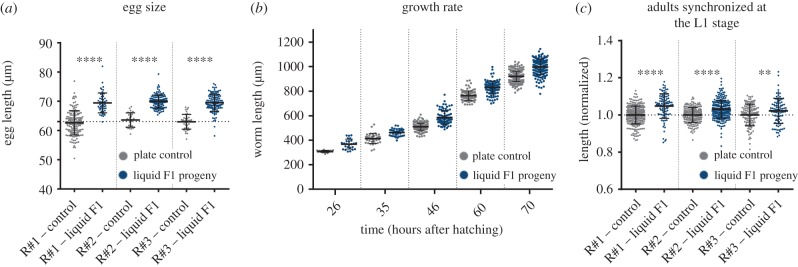Figure 2.
Progeny of liquid-grown worms are already longer early in development. (a) The length of eggs laid by liquid-grown worms and plate control worms. Data from three independent biological repeats are presented (N > 30). ****p < 0.0001, two-way ANOVA (biological condition is significant: p < 0.0001, biological repeat and interaction effect factors are not significant: p = 0.8642 and p = 0.2045, respectively). Sidak's multiple comparisons test p-values are presented. (b) The length of progeny of liquid-grown worms and control worms is presented at different stages of the worms' development. (c) The length of adult worm progeny of liquid-grown and plate-grown controls, 72 h after being released from starvation-induced developmental arrest at the L1 stage. Data from three independent biological repeats are presented (N > 100). ****p < 0.0001, **p = 0.0066. Two-way ANOVA (biological condition is significant: p < 0.0001, biological repeat and interaction effect factors are also significant: p = 0.0093. These factors explain 0.81% of the variance, while the biological condition explains 7.96% of the variance). Sidak's multiple comparisons test p-values are presented. Error bars represent standard deviations.

